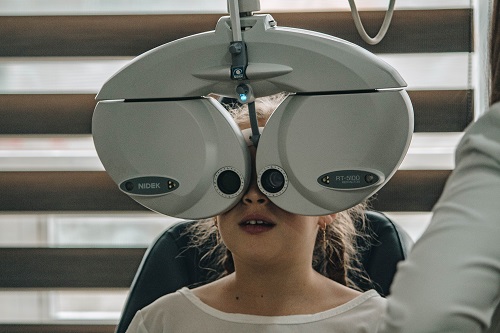Strabismus is a condition whereby the two eyes fail to properly align and work together, as one eye looks directly at an object whereas the other remains misaligned. The misalignment can be inward (esotropia), outward (exotropia), downward (hypotropia), or crossed-eyed. The condition can be intermittent or constant. To avoid double vision, the brain ignores the signal from the misaligned eye, as this can result in ?lazy eye? or amblyopia. This condition can significantly affect a child?s self-esteem and confidence and cause him or her to perform poorly in school. Other children may also bully or ridicule your child at school. Compare eye doctors in South Bend and learn more about this condition. Here?s how eye care professionals help you deal with strabismus.
Non-surgical treatment
Eye doctors say that eye alignment can be improved without the use of surgery. For instance, convergence insufficiency (CI) is a form of intermittent exotropia whereby the eyes tend to align properly when focusing on a distant object but cannot achieve the same when viewing close objects, as one eye drifts outward. This condition can interfere with activities like reading and cause the eye to strain or have blurred vision. CI can also affect academic performance in children and result in attention issues.?
Some evidence also suggests that children with exotropia and CI at an early age were likely to develop ADHD and learning disabilities in their early adulthood. Some forms of strabismus have been linked to an increased risk of myopia. Research has demonstrated that children with intermittent exotropia are likely to develop myopia in their 20s. However, non-surgical vision therapy has proven to be an effective treatment option for CI.
Eyeglasses and prisms
Strabismus treatment may also include the use of eyeglasses, prisms, and vision therapy. For some patients, this may be the only treatment required to help correct their vision. For others, however, prism lenses may be used to help correct the vision problem. These special lenses are designed to be thicker on one side and work by altering the light as it enters the eye. It also reduces the amount of tuning the eye has to be able to view objects. The prisms can completely get rid of the eye tuning and allow the eye to see properly.
Vision therapy
Eyeglasses and prisms are not the only non-surgical methods for treating strabismus, as vision therapy has proven to work just as well. An optometrist may also prescribe a well-designed and structured program that incorporates various visual activities to help improve eye coordination as well as eye focusing. With vision therapy, the eyes and brain can be trained to work in coordination and become more effective. Vision therapy involves a range of exercises to help manage some of the problems with eye movement and eye teaming, thereby reinforcing the eye-brain connection. This treatment option can be carried out in the eye doctor?s office or at home.
Eye muscle surgery
This is often considered as the last option because it is an invasive procedure. Eye muscle surgery can alter the position and length of the muscles surrounding the eyes to make them appear straight. In most cases, people who undergo this procedure also require vision therapy for improved eye coordination.?
Strabismus Surgery
In cases where non-surgical vision therapy is not a viable option, eye doctors may recommend strabismus surgery. If you?ve been diagnosed with strabismus, your optometrist may refer you to an ophthalmologist. Some ophthalmologists specialize in strabismus surgery. In some cases, two or more surgeries may be required for strabismus surgery to be successful. However, you can find more information from your surgeon during your pre-surgical consultation. The success of this surgery depends on the magnitude and direction of the patient?s eye turn. Regardless, the surgery can help to align the patient?s eyes as a way of treating long-standing strabismus.
In some adult cases, a substantial degree of amblyopia tends to remain even after properly aligning the affected eye. For this reason, eye doctors often emphasize early treatment. Earlier surgical treatment of strabismus, to some extent, guarantees that the affected eye will achieve normal visual acuity, allowing the two eyes to function together as a team.?
Therefore, eye doctors advise people with strabismus to seek non-surgical vision therapy before resorting to surgical methods. This is especially important for children because their vision problems can be treated early to achieve normal visual acuity. However, some parents believe that children outgrow strabismus or that the condition will improve on its own over time. In reality, this does not always happen and the condition can worsen over time if left untreated. If your child?s eyes are not properly aligned, he or she may be suffering from a lazy eye. You need to consult an eye doctor as soon as possible to help you deal with strabismus so that you can develop normal visual acuity and gain confidence. (mastertechplumbing.com)


